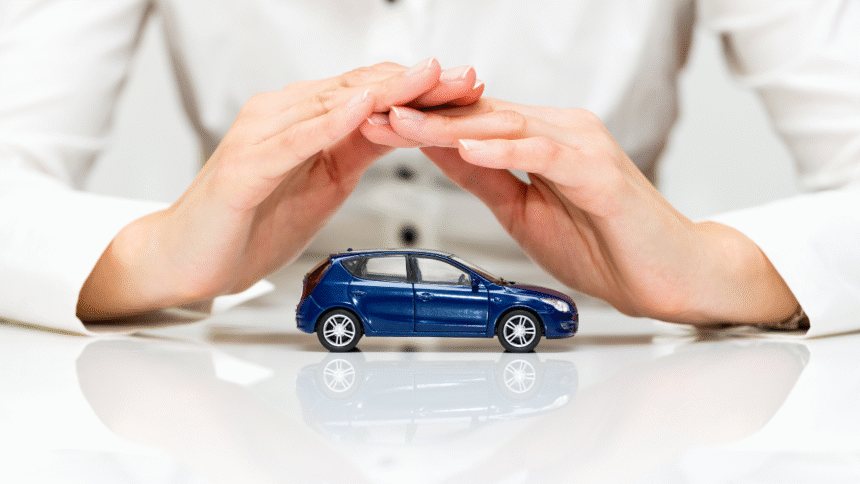Table of Contents
- Importance of Surface Protection
- Types of Surface Protection
- Benefits of Paint Protection Film
- Ceramic Coatings vs. Wax
- Application and Maintenance Tips
- How Surface Protection Adds Value
- Choosing the Right Protection
Protecting your car’s exterior isn’t just about keeping it shiny—it’s about preserving its value and integrity over time. From harsh UV rays and acid rain to bird droppings and road debris, your vehicle faces constant threats that can damage the paint and reduce its lifespan. Protecting your car’s surface is crucial for maintaining its condition, helping you save on repairs and keeping it looking newer for a longer period.
Ceramic coatings represent one of the most efficient methods to protect the exterior of your vehicle. These advanced coatings create a durable, invisible layer that shields your car’s paint from environmental damage. For those considering ceramic coating for cars in Killeen, TX, it’s an investment that offers long-term benefits, including easier maintenance, enhanced gloss, and resistance to contaminants. Understanding how these protective solutions work is key to making the right choice for your vehicle’s care.
Importance of Surface Protection
Protecting the surface of a vehicle is crucial for maintaining its look and worth, particularly due to continuous exposure to harsh conditions such as UV rays, road dirt, and chemical pollutants. One of the most effective ways to safeguard a car’s exterior is through advanced coatings that create a durable, protective layer over the paint. Many car owners search for automotive ceramic coating near me to find local services that offer this high-performance solution. It enhances the vehicle’s gloss and depth and provides long-term resistance to damage, making maintenance easier and ensuring the finish stays flawless for years. Over time, this added layer helps reduce the frequency of washes and detailing, saving time and effort. It’s a practical approach to keeping a vehicle looking new, even with daily use and exposure to the elements.
Types of Surface Protection
Surface protection extends across various products, allowing car owners to select the best method suited to their needs and circumstances. The main categories include paint protection films (PPF), ceramic coatings, and waxes. Each type has distinct advantages and potential limitations, offering choices that accommodate different budgets, climates, and desired maintenance levels. Understanding the nuances of every kind of surface protection enables car owners to make informed decisions, maximizing both their vehicles’ longevity and value.
Benefits of Paint Protection Film
Paint protection film is a remarkable innovation in vehicular care, providing a virtually invisible barrier that’s adept at preventing physical damage. It excels in areas susceptible to frequent impacts, such as the front bumper, hood, and side mirrors. PPF is historically praised for its durable quality, enabling it to absorb scratches and chips that would otherwise penetrate the vehicle’s paint. The film is thick enough to provide substantial protection without altering the visual characteristics of the car, making it a popular choice among car owners who seek to preserve their vehicle’s pristine appearance.
Ceramic Coatings vs. Wax
Ceramic coatings and wax are popular methods for protecting vehicle surfaces. Ceramic coatings are generally superior due to their longevity and strength. They form a semi-permanent bond with the vehicle’s paint, providing a glossy finish and hydrophobic properties. Unlike wax, which requires frequent maintenance, these coatings can protect against environmental hazards for several years without the need for reapplication.
Car owners often prefer ceramic coatings because of their exceptional protection. While waxing is more cost-effective and can deliver a commendable shine when applied correctly, it necessitates regular upkeep. On the other hand, ceramic coatings require less frequent maintenance and offer higher levels of protection.
Application and Maintenance Tips
Ensuring the correct application and routine maintenance of protection products is crucial in obtaining optimum results. First, any protective layer must be applied to a clean, dry, and contaminant-free surface. This ensures proper bonding and effectiveness. Once used, regular wash routines with pH-neutral products are advisable. Preserving the vehicle’s surface not only enhances aesthetics but can also improve resale potential. Maintenance includes periodic inspections and promptly addressing minor imperfections for optimal surface protection.
How Surface Protection Adds Value
Investing in surface protection notably extends the life and quality of your vehicle’s exterior finish, which is a valuable asset come resale time. A well-preserved exterior projects a positive image and implies diligent upkeep, attracting potential buyers. Thus, surface protection is an investment not just in maintenance but also in the value retention of your vehicle. Vehicles that preserve their visual appeal throughout the years tend to fetch higher resale values, turning surface protection into more than just a cleaning measure—it’s a prudent financial choice.
Choosing the Right Protection
Choosing the proper protection method is customized based on individual factors like budget, climate, and vehicle usage. It’s essential to consider the advantages and disadvantages of each alternative and consult with a professional if needed. The suitable surface protection option should align with lifestyle preferences, ensuring satisfaction and optimal performance. Consulting with specialists and assessing your most common environmental exposures will ensure you choose a protection method that enhances your driving and ownership experience.






